Bhutan and the Blueprint for a Wise City
A recap of Edge City Bhutan: an 8-day exploration of Bhutan's futuristic experiment in mindful development
The flight into Bhutan sets the stage for the unique experience that lies ahead. The plane flies past Everest and through Himalayan peaks before weaving into the small Paro valley, mountains so close you think the wings could brush them. It’s exhilarating; the kind of arrival that makes you pay attention. Bhutan insists you arrive with awareness.
This was my third trip to the country, and this time I brought 30 members of the Edge City community: founders, researchers, artists, and investors, from organizations like Ethereum, SpaceX, IDEO, Paypal, Optimism, and top VCs. We came to explore a national experiment in reimagining development: The Gelephu Mindfulness City (GMC), a project set into motion by the King, which aims to build a new city that combines frontier technology and growth with a bedrock of Buddhist principles.
By the end of the week, we had shared blessings with monks, hiked sacred trails, danced in the capital’s clubs, and hosted a 120-person innovation day with leading government officials and local founders. We left convinced: Bhutan is undertaking one of the world’s boldest and most interesting experiments in designing for a flourishing future.
A History of Alternate Paths
For those unfamiliar with Bhutan, it’s helpful to start with some context about the aspects that make it such a unique place.
In 1972, the fourth king declared that Gross National Happiness (GNH) is more important than GDP, and turned the GNH metric into a framework for policy. Instead of optimizing for growth alone, Bhutan measures the wellbeing of its citizens across nine domains, from education and health to cultural preservation and ecology. The measure is used to inform policy decisions at the highest levels of government.
Bhutan is also one of the few countries that have never been colonized, and it maintains a strict cap on the number of tourists allowed to enter, which has enabled it to preserve a unique cultural and aesthetic identity. When you’re there, you can feel it; all buildings, from farmhouses to new government offices, follow a distinctive architectural style, creating a beautiful visual unity throughout the country.
This commitment extends to its relationship with the natural world. Bhutan’s constitution mandates that at least 60% of the country remain forested forever. Today, it is one of only three carbon-negative countries on Earth.
Visitors are also often surprised to learn that Bhutan is the fourth-largest sovereign holder of Bitcoin in the world, amassing its collection through mining since 2019, using the country’s surplus hydropower. The country was also one of the first to implement a decentralized self-sovereign identity system built onchain, called BhutanNDI.
And perhaps most remarkably, Bhutan is the only country in modern history where a king voluntarily initiated democracy and abdicated, against the wishes of his people. Bhutan had been an absolute monarchy since 1907, and the country held its first elections in 2008.
These facts reveal a pattern: Bhutan has long pursued its own unique vision, interweaving a grounded wisdom and deep care for its people, alongside technological change.
That approach is now shaping an entirely new city.
Grounding in Wisdom
The early part of our week in Bhutan began with a deep dive into the country's spiritual wisdom.
On our first morning, we drove to a centuries-old temple where we received blessings from the monks, who chanted for our wellbeing. The blessings were organized by our local leader, Dorji Wangchuk, PhD (Dorji’s personal blog is great), who was once the Press Secretary to the king. He explained that these rituals are an essential part of any journey’s beginning. When they’re not chanting for us, he said, they pray for all sentient beings.

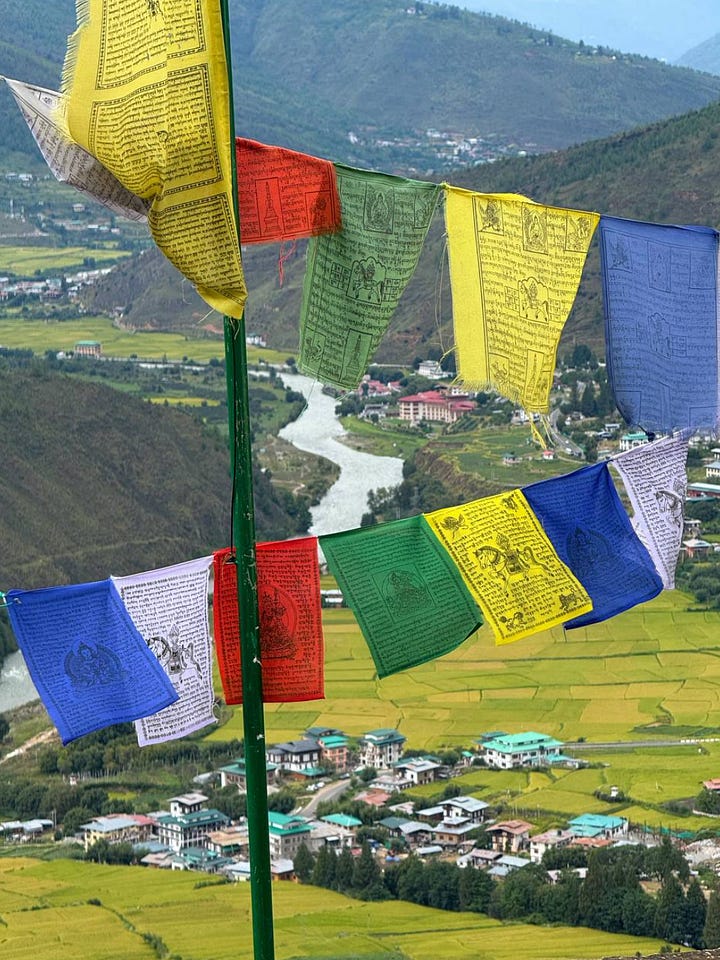

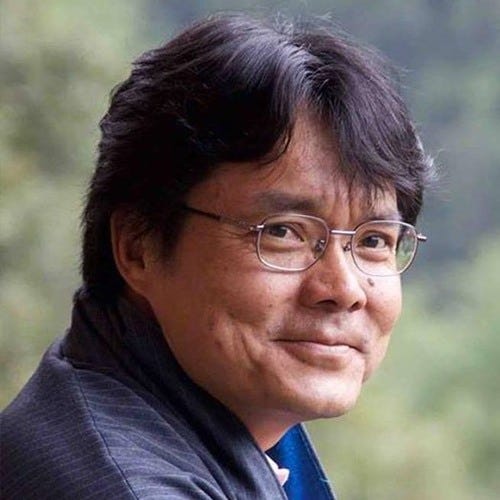
The next day, we hiked to Tiger’s Nest Monastery, which sits perched on a cliff, 3,000m above sea level. The sheer drop falls away beneath the monastery walls, and the thin mountain air turns the climb into a silent meditation. There, the head Lama welcomed us for a long-life ceremony in the holiest room. We learned about the Bhutanese concept of moelam: aspirational prayers or intentions voiced to shape reality. Unlike karma, which looks backward, moelam is forward-facing. Every moment is a chance to set a new trajectory.
Moelam is also a way to acknowledge the incredible coincidence of meeting anyone in this world; the trillions of things that had to go right for you to share an experience with any other being. Dorji says that he treats the people he sits next to on the plane with reverence, given how unlikely it is to meet them at all.

Later in the week, we stayed overnight at Dodedra Monastery, which sits a 2-hour hike above Thimphu, the capital of Bhutan. Near the end of our walk up the mountain, we met a group of monks setting up a volleyball net. They played with us until the rain started falling too hard to ignore, and we ran to a covering to share butter tea and biscuits.
Later that evening, we received blessings in the temples and stayed overnight in the monks’ quarters, getting a small taste of what it’s like to live a life dedicated to Dhamma. We learned that Buddhism has a long history of debate and active discourse, with monks and even local farmers engaging in discussion about the nature of reality and wisdom.

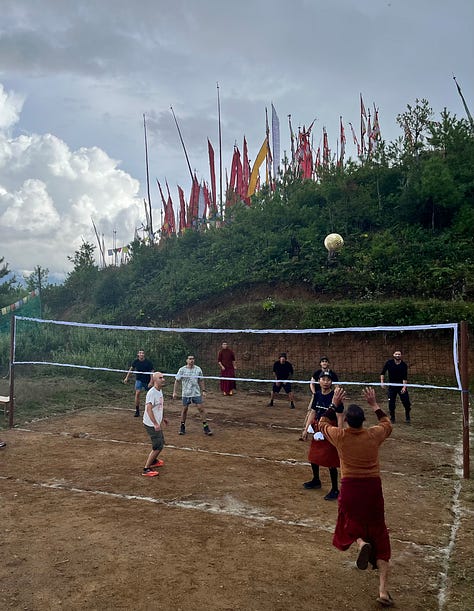


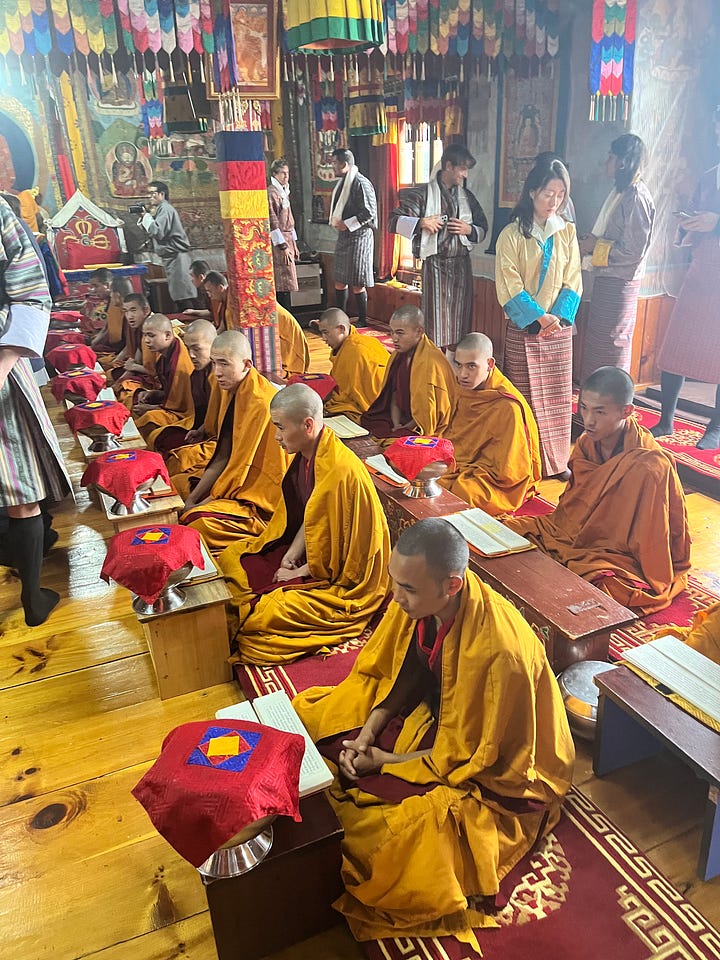


These experiences made it clear that Bhutan’s wisdom is a living, practical reality. It offers a foundation for the country’s future ambitions and sets up the central tension we saw all week: the challenge, and the promise, of combining centuries-old traditions with future-minded growth.
The Future Takes Shape: Gelephu
After grounding ourselves in the country’s spiritual heart, we took a day-trip to the site of the new Gelephu Mindfulness City, which will be situated in the south of the country. A 30-minute flight from Paro brings you to the edge of the Himalayas, where the mountains meet the flat tropical plains and the border of northern India.
Local officials met us and led us to a dozen official cars. We convoyed to the site of the new international airport, where bulldozers had broken ground earlier that year. When we arrived, planners unrolled maps for a 2,500 km² region of the entire Special Administrative Region, which will eventually host millions of people. As I understand it, we were among the first foreigners to have the opportunity to see the construction.
GMC was announced in 2023 by King Jigme Khesar Namgyel Wangchuck as a response to a generational challenge. Many young Bhutanese leave to find work abroad due to a lack of job opportunities. The majority go to Australia, but there are diaspora communities around Asia, Europe, and the US. The ultimate goal of GMC is to create opportunities close to home by attracting global talent and investment, but on Bhutan’s terms. The special zone is deliberate: a reflection of the king’s desire not to alter the tradition and culture of Bhutan itself, but to still create an environment that attracts economic growth where foreigners can come to live and domicile their businesses, and hire local Bhutanese. GMC will operate as a Special Administrative Region with its own governance and legal systems, designed to be nimble and attractive to foreign investment.
The blueprint is unlike that of any other city. The first layer of infrastructure, aside from the airport, is ten sacred temples, so the city grows from a spiritual foundation. This will also serve as the first industry of the city, bringing tourists who want to learn and grow through spiritual teachings.
Every stage of development will be informed Bhutan’s Gross National Happiness framework. It is an attempt to build an economic engine rooted in wellbeing, not just output. The plans showed IT parks running on clean energy and world-class education hubs to reverse the brain drain. The founders in our group wondered if talent and capital would come fast enough. The consciousness researchers were fascinated by a model that puts spiritual infrastructure first. Everyone agreed it was a gamble that no other country is taking.
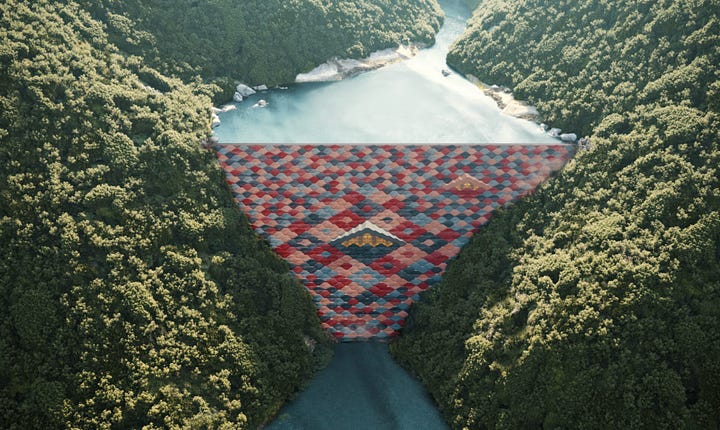
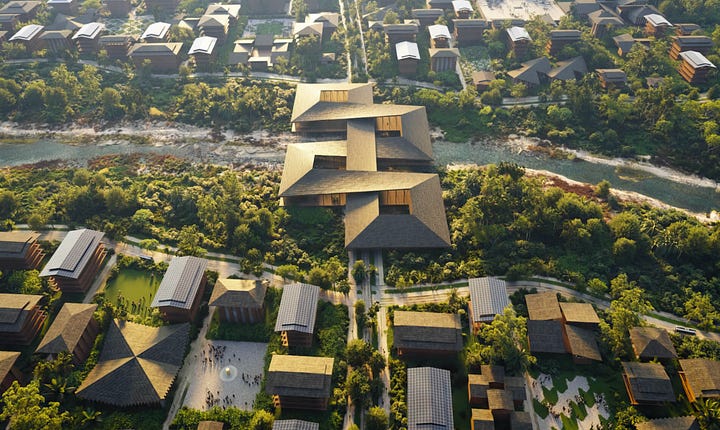


The renders and maps are beautiful and paint an exciting vision, but a nation’s future is ultimately written by its people. The part of our trip I was most excited about was spending time in conversation with the Bhutanese who will build, and live in, this future.
Ideas Exchange
On our last full day, we co-hosted an “Ideas Exchange” programming day in the capital, Thimphu. We created the event with the help of the GovTech Secretary’s office, who oversee all tech-related things for the government in Bhutan. The room held 120 people: our thirty, alongside ninety of Bhutan’s leaders and builders; entrepreneurs who had returned from abroad, government officials shaping new policies, investors, and students eager to build.
The afternoon was structured as a rapid exchange of ideas, starting with a series of short lightning talks. These included talks from locals, including Pema Wangchug from DHI InnoTech, who explained the way the country views innovation. DHI, or Druk Holding and Investments, is the nation’s sovereign investment arm, the commercial engine tasked with stewarding Bhutan’s economic future.


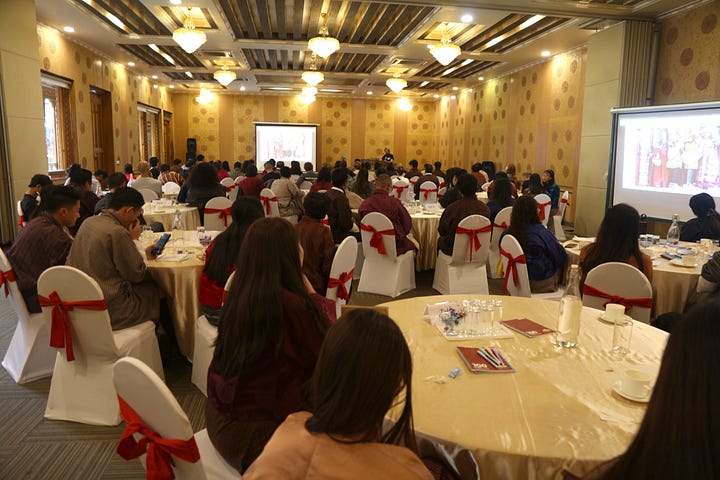

Our group also gave talks, sharing their learnings from building successful ventures around the world. They covered a broad spectrum. James Tunningley, a former diplomat, spoke on the principles of structuring innovation ecosystems; Devansh Mehta from the Ethereum Foundation discussed funding mechanisms; YC Sun from IDEO and Stanford explored design systems.
After an hour, we broke into roundtables. We held ten tables, each facilitated by a guide who would lead the discussions, and participants could self-select which table to join based on their interests.
I was hoping this would be where abstract ideas would meet with specific implementation needs. At the innovation ecosystems table, the conversation quickly flipped from “how can we emulate Singapore?” to “what could be developed in Bhutan that could only exist here?” Someone raised the possibility of a center for the study of where consciousness, Buddhism, and AI intersect. This could have legs, the group agreed; there are many people in the West thinking about these questions, but few have spent meaningful time in a Buddhist country. The questions shifted from “can Bhutan modernize?” to “what can Bhutan pioneer that nowhere else can?”
Later that night, we ended up at Grey Area, a club in Thimphu that my local friend had told me was going to have a great house DJ that night. The music was great, the crowd was energetic, and it was a perfect chance to meet the young adults of Bhutan and get to know their hopes and dreams for the future. Over drinks, a young woman told me she was organizing Bhutan Fashion Week and invited us all to attend. Her friend described studying in Canada and deciding to return, even though she had the option to stay. “It’s still home,” she said, “and I can work remotely. GMC is exciting; I want to live there one day.”
These conversations, both formal and informal, showed us that Bhutan is a place actively negotiating its future. As one young Bhutanese entrepreneur told me during the Exchange: “We trust our King, and we’re excited. We need the jobs. For us, there’s no other option; GMC has to work.”
The Middle Way
But for GMC to work, it will have to balance between preserving a centuries-old tradition and embracing the economic growth needed to build a brighter future. Like walking a thin path on a steep Himalayan ridge, this tension came up throughout the week: how do you solve a problem that seems to pull in two opposite directions?
The planners are hopeful that their approach will succeed. During our trip to Gelephu, one of them told us, “We’re not just building a smart city. We’re building a wise city.”
A smart city uses sensors to manage traffic and algorithms to optimize services, a model designed for efficiency. A wise city optimizes not just for efficiency, but for human flourishing. It asks not just what is most efficient, but what is most meaningful. It doesn’t just import solutions; it grows them from its own cultural soil.
You can see the experiment as an application of the Buddhist concept of the Middle Way: a path of wisdom that avoids extremes. One extreme would be to treat tradition as a fragile relic that must be protected from the modern world, effectively turning a country into a museum. The other extreme is to pursue growth at all costs, erasing culture for the sake of efficiency. The Middle Way seeks a synthesis. It asks if tradition can be the very foundation upon which sustainable growth is built.
For Edge City, seeing this philosophy in practice is inspiring. Our popup villages are temporary laboratories where we experiment with new systems for how we might live and build flourishing communities. Bhutan is doing this at a national, multigenerational scale. Learning about GMC, I found myself thinking, what is our equivalent of leading with wisdom?
Opportunities for Collaboration
I wanted to end the week with clear commitments of how Edge City can continue to collaborate in Bhutan. Out of the Ideas Exchange and our time on the ground, a few clear opportunities emerged:
Physical presence in Gelephu. We’re exploring a workspace where Edge City members and Bhutanese entrepreneurs can collaborate year-round. Not just another coworking space, but a hub for building together.
Youth mentorship. This Autumn, a large group of youth will head down to Gelephu, and we have started to sign up Edge City members to serve as mentors.
Consciousness x AI Lab. Several participants want to prototype AI tools aligned with Buddhist values, from Dzongkha language models to meditation apps backed by neuroscience.
Builder exchange. Regular programs to bring Bhutanese founders into Edge City villages, and to send our residents to Bhutan to contribute on the ground.
These are still early sketches, but they are the beginning of a relationship, and a reminder that experiments in human flourishing work best when they are shared.
Thanks so much for reading,
Timour
We’re continuing our collaboration with Bhutan as GMC develops. If you’re interested in contributing to our initiatives, joining our mentorship program, or exploring how consciousness and technology can evolve together, please follow along on our newsletter, X, or Instagram.
Next Edge City Gathering: Patagonia, October 18 - November 15, 2025
Special thanks to our partners at Abroad.io, the GovTech team, the GMC team, and especially the people of Bhutan who shared their country and vision with such generosity.
Appendix:
Participants’ Quotes
“Edge has a way of pulling together the exact kind of people the world needs right now: equal parts hearts and smarts. No posturing, no status” - Serj Hunt
“I want to thank every one of you guys for an incredible experience this past week. Seeing Bhutan was extremely special, but even more special to me was getting to know all of you exceptional people.” - Nick White, Celestia
“My brain is spinning from all the mental models and ideas I’ve downloaded in the week. Both from the other participants and also the programming” - Devansh, Ethereum Foundation
“I learned that edge is where you go to meet people who might change your life forever, in the best possible way. [...] Bhutan and its people are now cemented into my heart forever. i still need some time to process everything i learned and experienced. from meeting with locals and exchanging ideas, to visiting the future site of gelephu mindfulness city, to long discussions about vajrayana buddhism, karma, dharma and the bhutanese concept of moelam, there remains so much to explore that i’m certain i will be back… This trip and the people in it impacted me so much that I’m thinking of rearranging my plans to join Edge in Patagonia, too.” - Tinyrainboot
“Edge Bhutan took me by surprise, I went in with the expectation of eco-retreat meets tech-egotism and was instead greeted by heart-orientated people, deep conversations about human flourishing and spirituality balanced by responsiblity, and a shared sense of pragmatic dreaming towards the future of bhutan, it’s people, and environment. This trip was a highlight of my year!” YC Sun, IDEO, Stanford
Our Itinerary
Day 1: Arrival in Paro, Rinpung Dzong visit, welcome dinner.
Day 2: Temple blessings; fireside on Gross National Happiness with Dasho Karma Tshiteem.
Day 3: Hike to Tiger’s Nest Monastery, long-life ceremony, introduction to moelam.
Day 4: Flight to Gelephu, site tour of GMC, late-night group debates.
Day 5: Hike to Dodedra Monastery, volleyball with monks, shared evening meal.
Day 6: Dawn longevity ceremony, silent descent from monastery, reflections with Dr. Dorji Wangchuk.
Day 7: Ideas Exchange with 120 Bhutanese and international participants; closing night at Grey Area club.


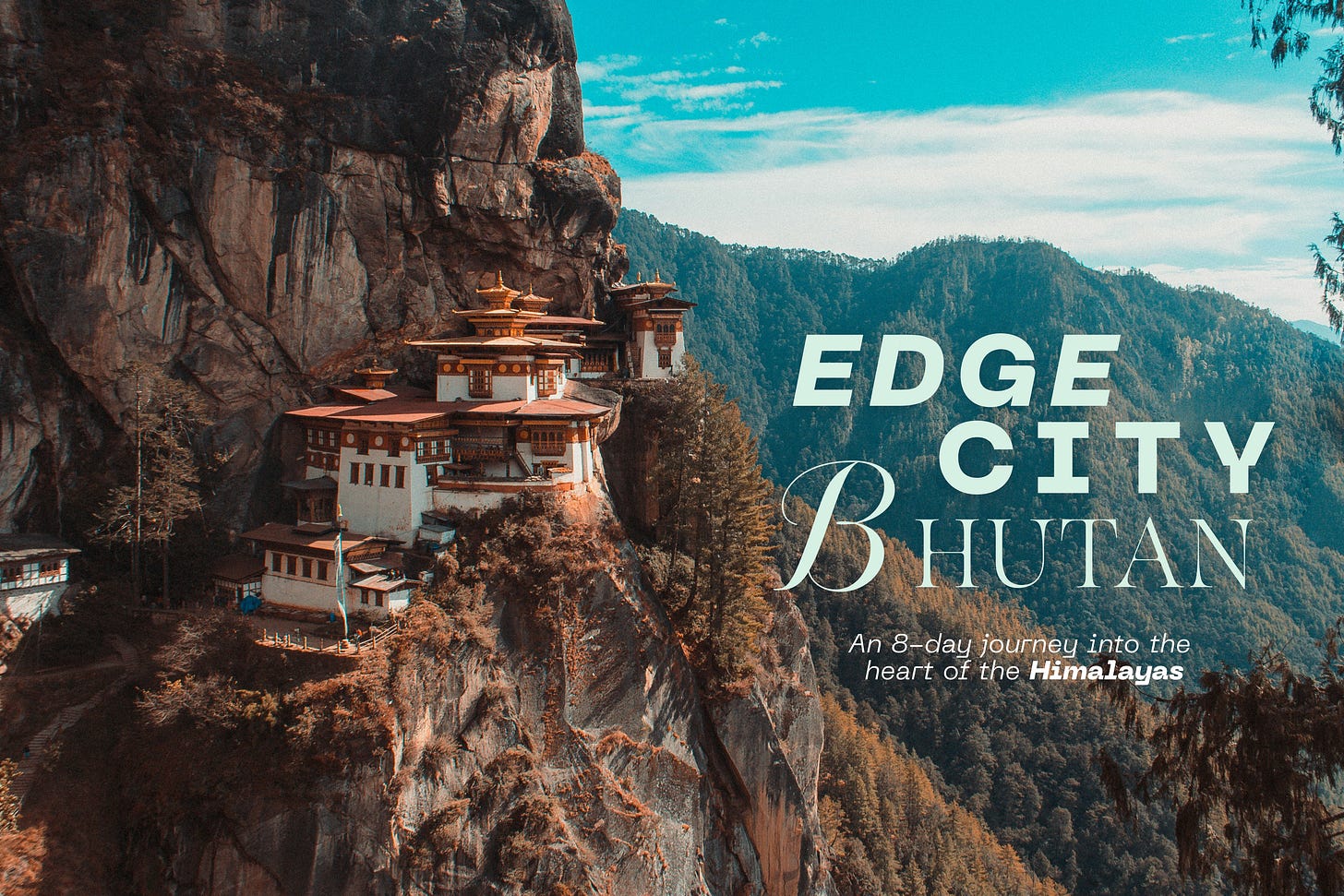
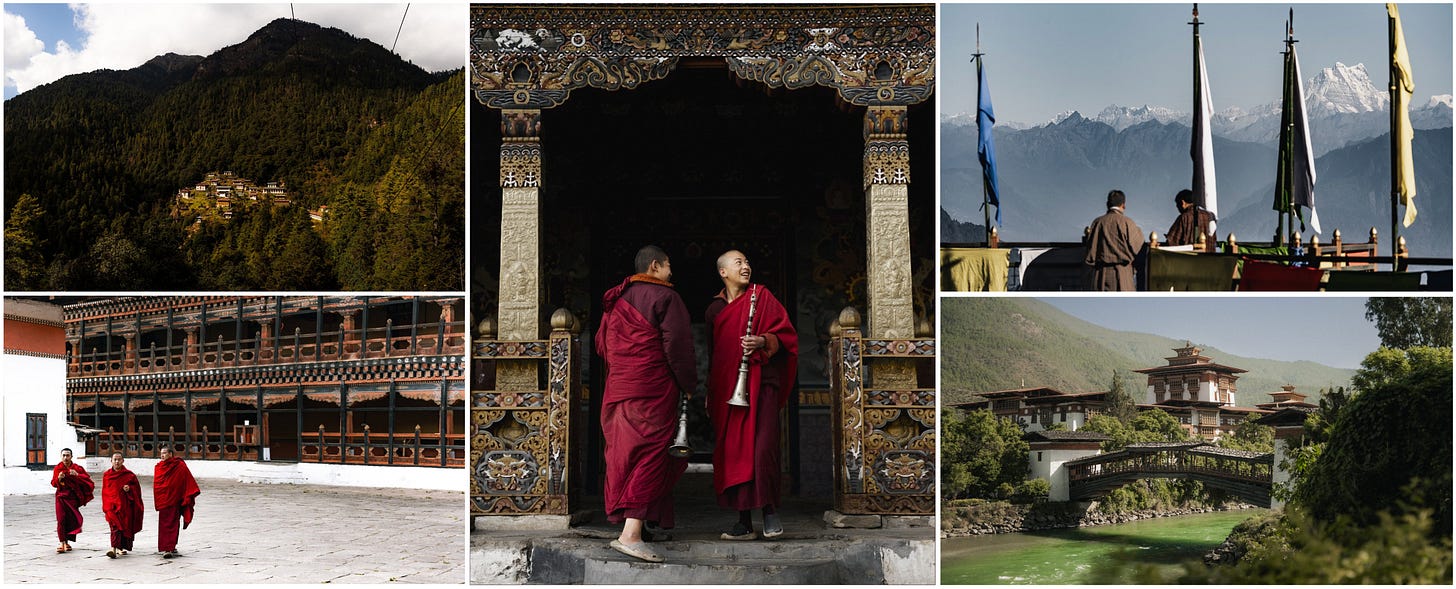
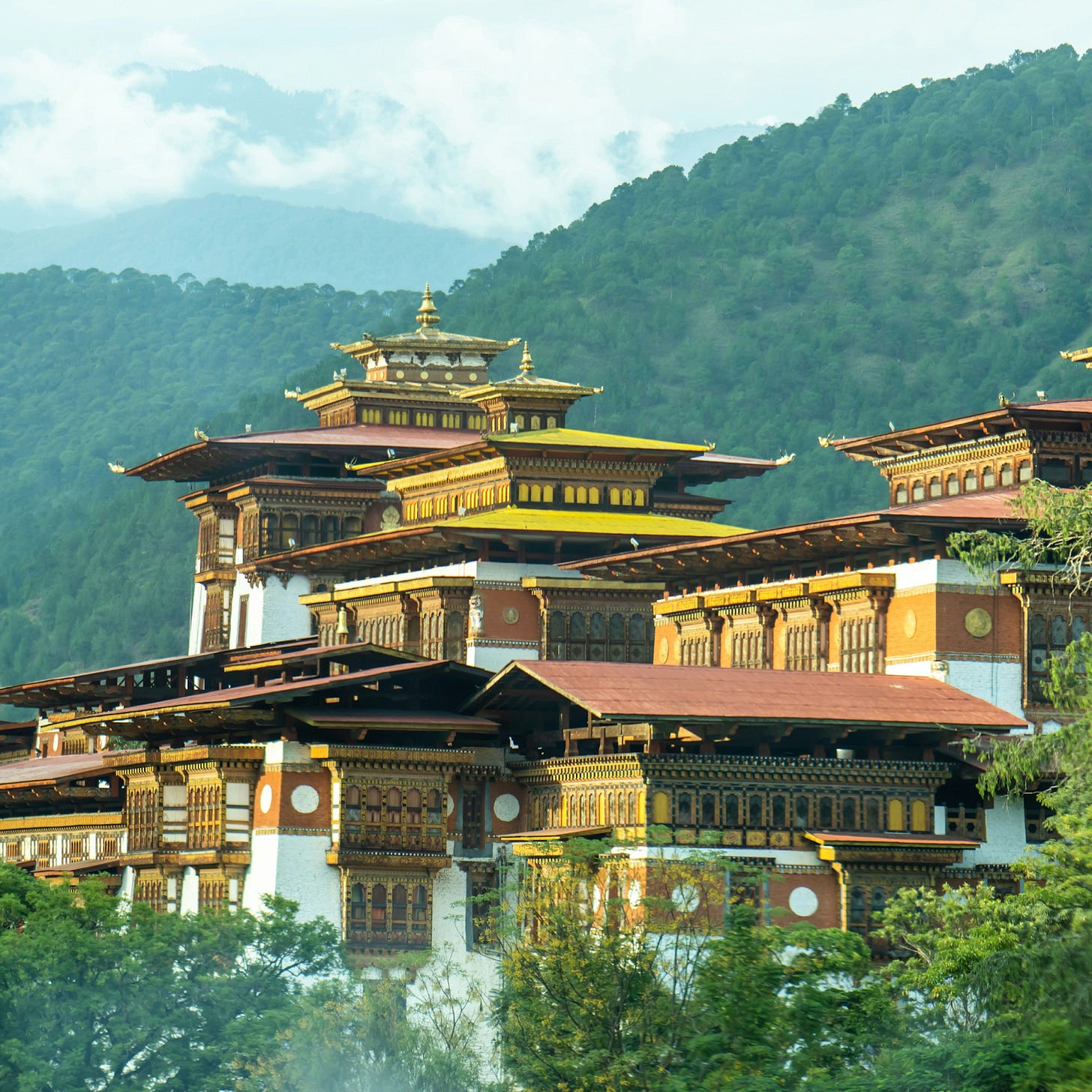

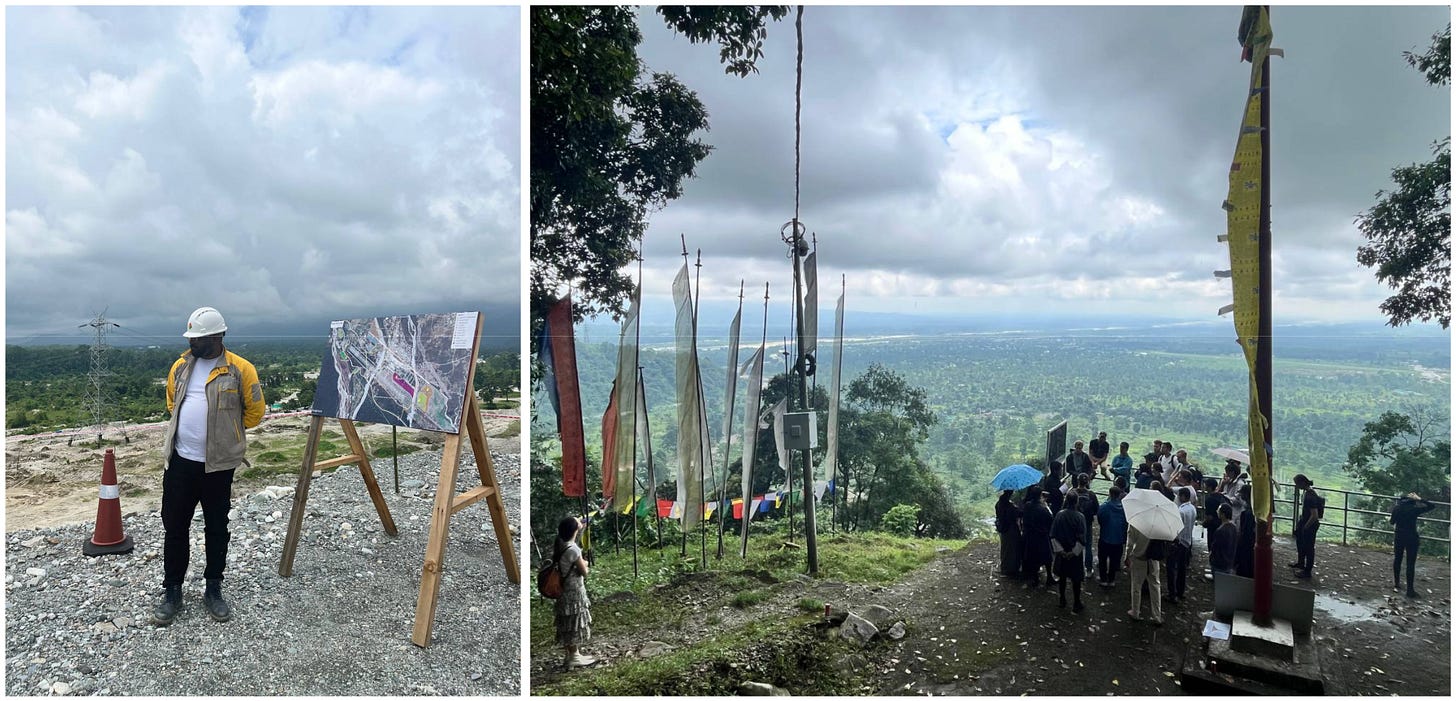
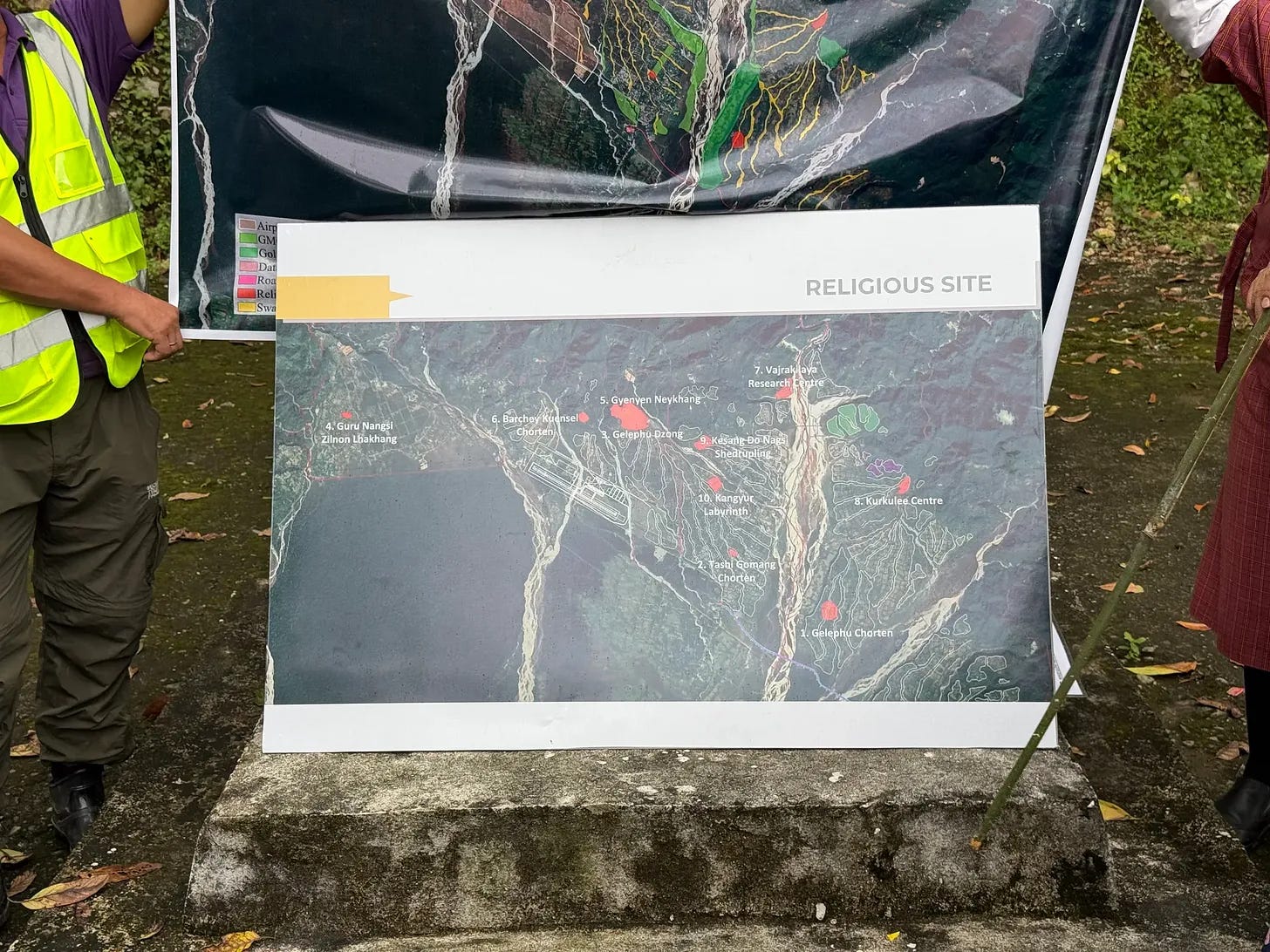
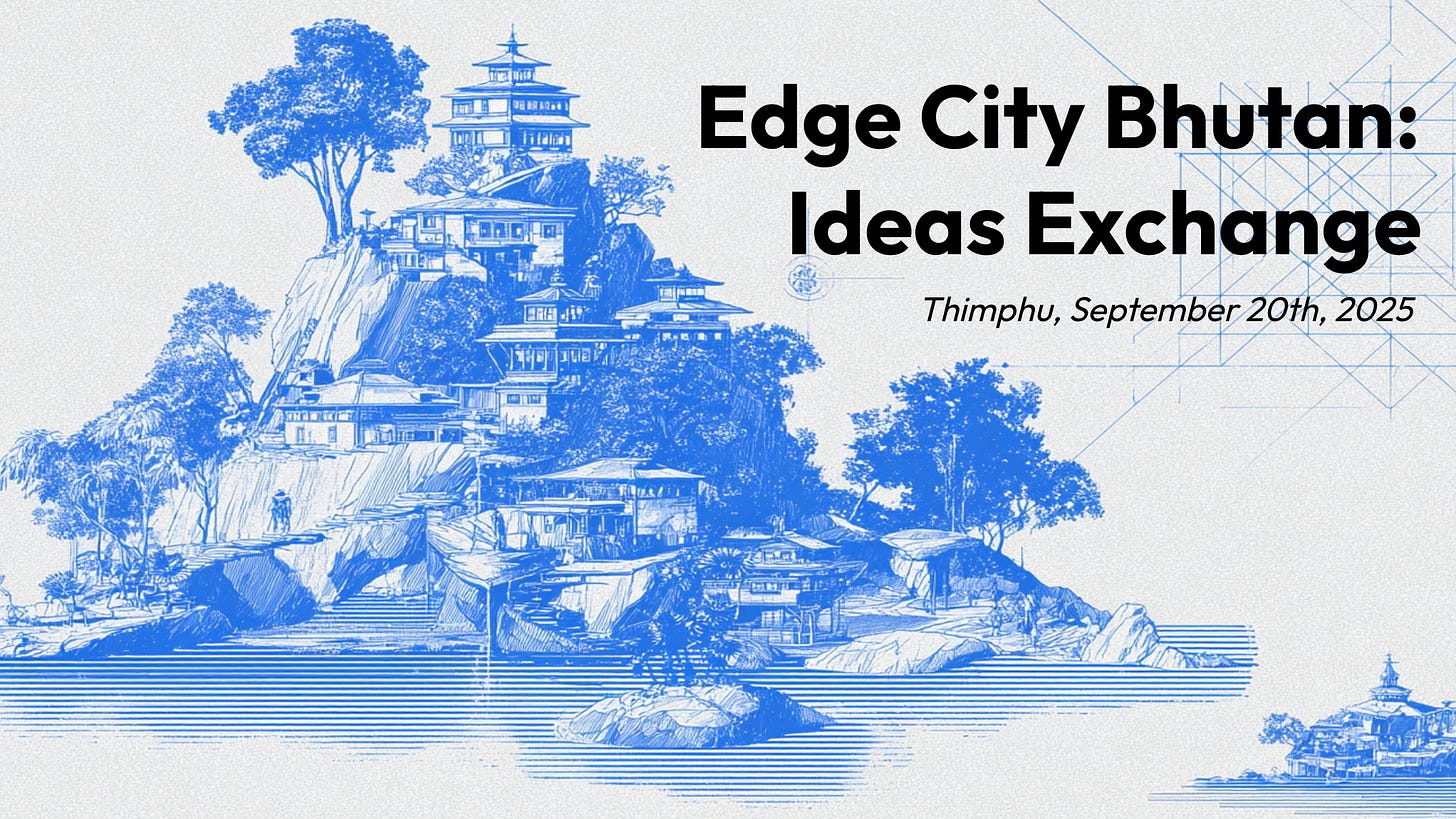
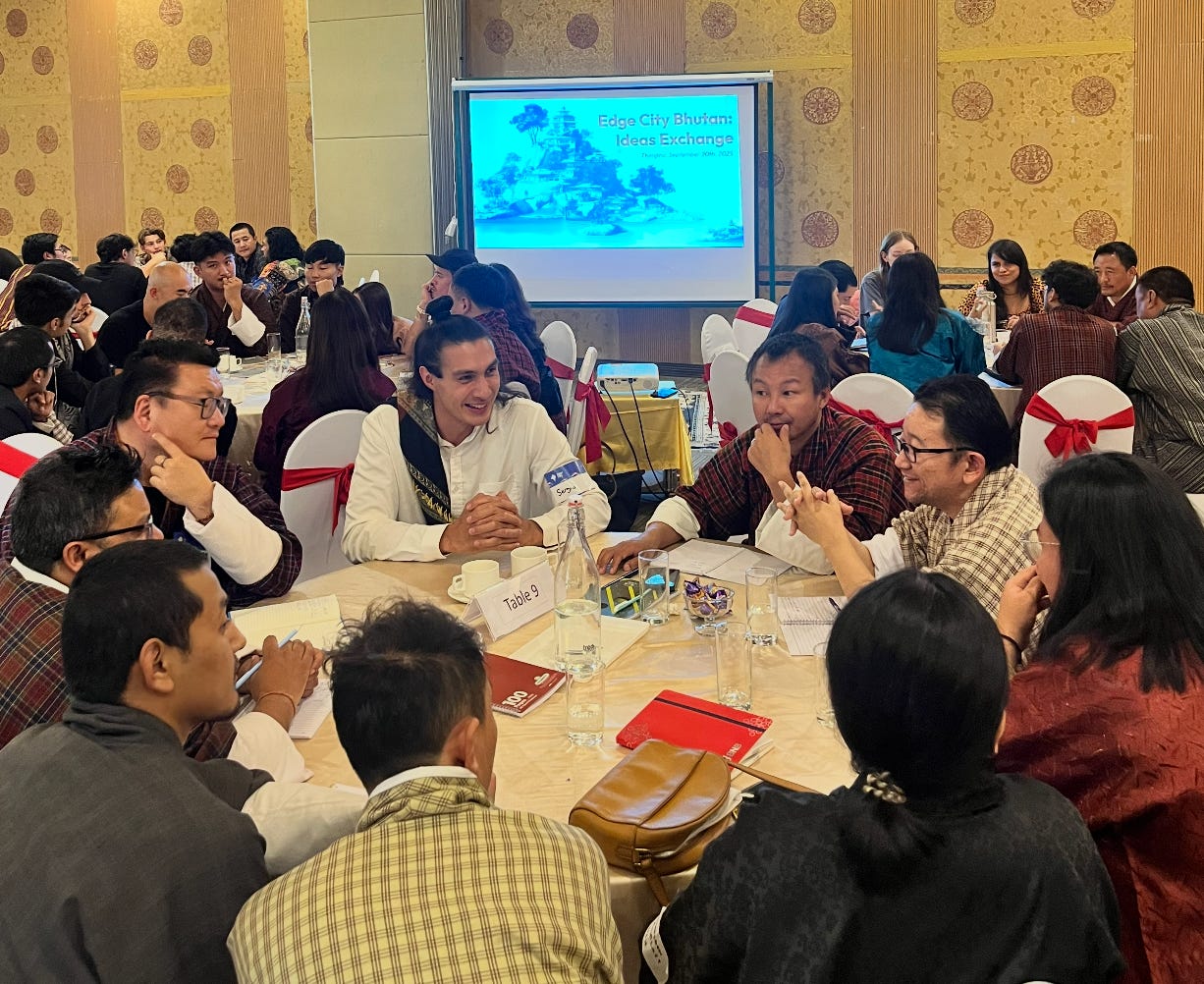

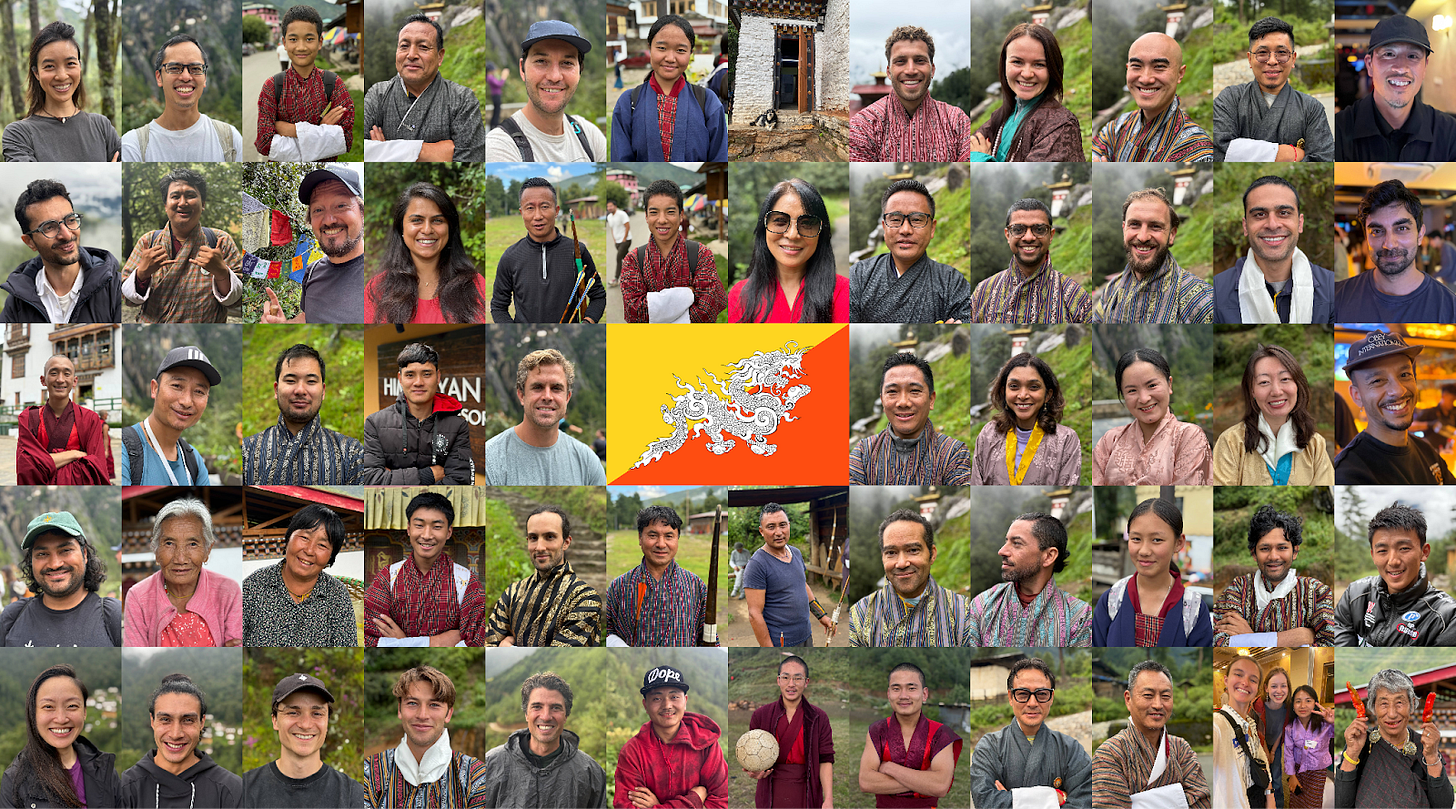
Wonderful. Can the whole world build the middle way.
this is amazing